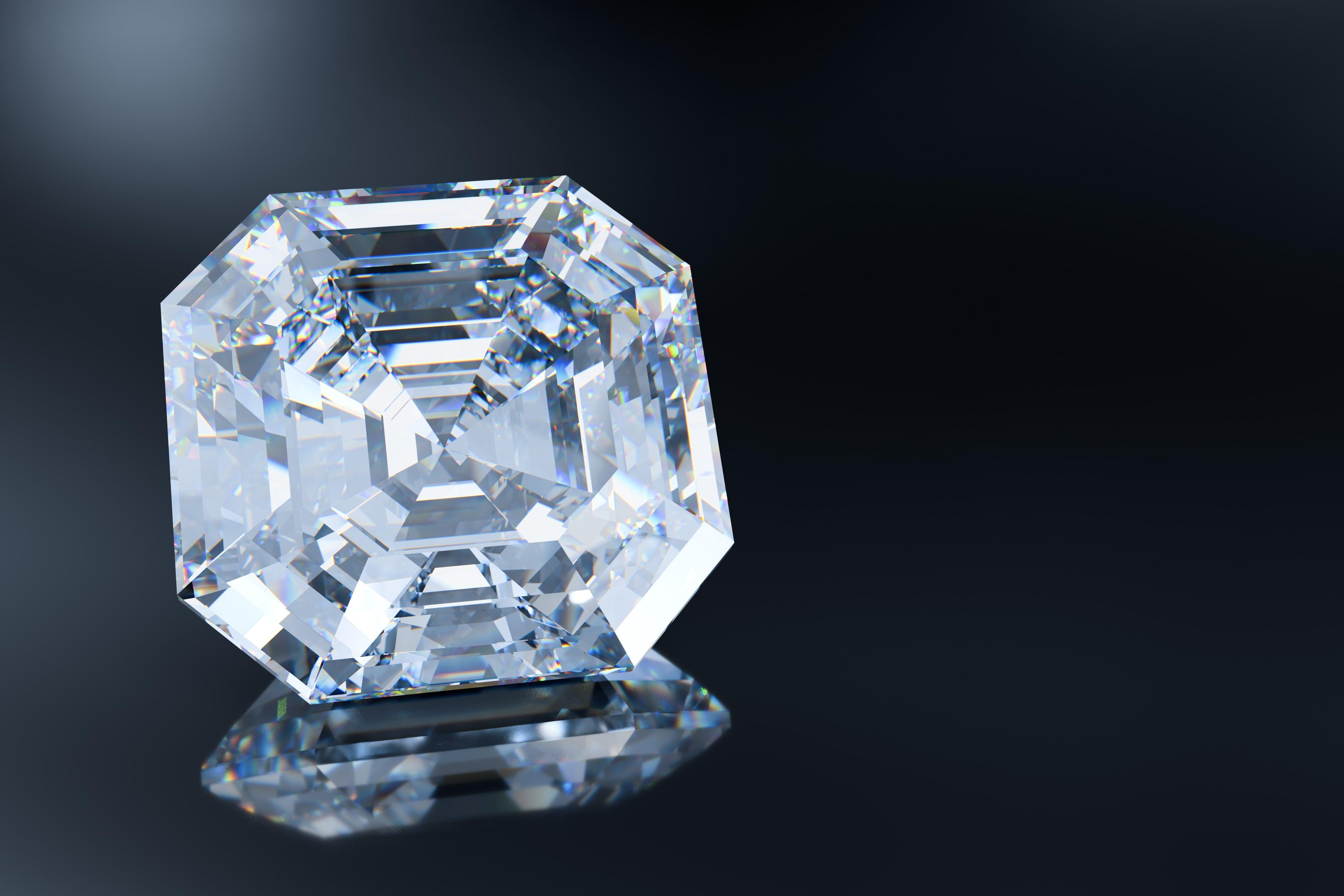
The Great Asscher Cut

One of the more rarified of styles, the Asscher cut was created in 1902 by Joseph Asscher, one of those responsible for cutting the legendary Cullinan Diamond.
Characterized by its symmetry, and designed to maximize the brilliance of a diamond, as opposed to fire or scintillation, the original cut was a modified square with cropped corners, almost an octagon, with 58 step-cut facets, ground ideally to a length-width proportion of 1:1.
It is famously unique, emblematic of the nascent Art Deco movement.
Its geometric lines, stepped facets and soft angles create perhaps the greatest hall of mirrors effects of any diamond cut, allowing the viewer to follow Alice into that kaleidoscopic-hypnotic tunnel. And its large facets give an unobstructed view inside this hall, with, in perfectly cut stones, an x at the bottom.
The difficulty of cutting all 58 facets to produce that unique effect, and because those large facets will expose any flaws and inclusions, make this cut one often reserved for larger diamonds of higher quality.

The 58 facets of the Asscher cut are step cut, like an emerald cut (though larger than that cut) meaning that they are cut in “steps” parallel to the diamond’s outer edge, up the high crown to the traditionally small table, and usually spanning the length or width of the diamond. These cuts often have a deep pavilion and a faceted culet.
It made history as the first cut to be patented: by Joseph Asscher for Royal Asscher Diamond Company, of Amsterdam. The cut remained the exclusive property of Royal Asscher for another four decades, expiring just before World War II. Other companies have since experimented with the cut, but the original design’s equilibrium and balance remain extremely popular.
Its clean, chic, almost industrial presentation and fine lines took a few decades to become popular, but it found its first home in the anti-traditional artists, socialites, and influencers of the 1920’s and thirties. It remained one of the preeminent choices for anyone who wanted to add that special edge, and stand out with its hypnotic brilliance.

This cut should definitely be considered by anyone interested in maximizing the brilliance of the diamond. In addition, with a high crown and deep pavilion, this cut’s overall size make it a fantastic choice if you want more of a three-dimensional view. For those who want to have a gleaming piece that will be noticeable from far away, this cut’s sheer brilliance may be very satisfying.


